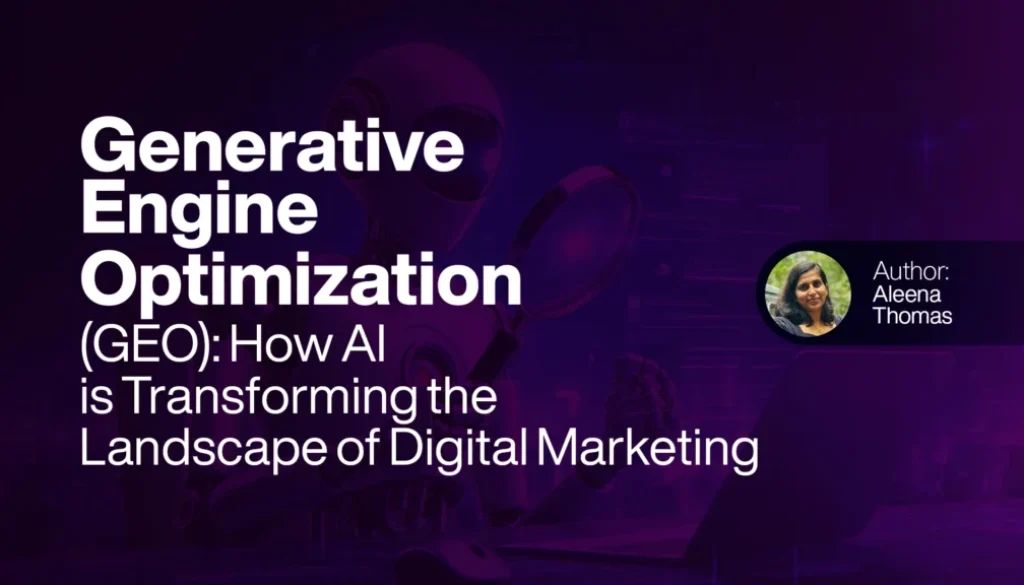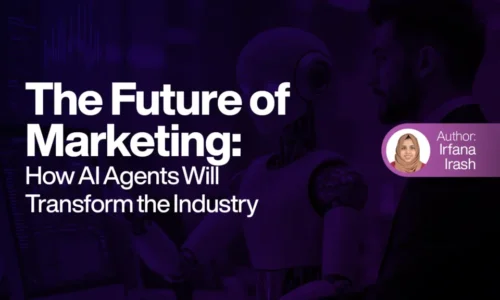Generative Engine Optimization (GEO): How AI is Transforming the Landscape of Digital Marketing
Table of Contents
1. A Change in the Wind: The Rise of GEO
Let’s meet Sarah, the owner of a delightful handmade bakery located in the heart of downtown. She has poured her heart into learning about sourdough, but online, she can barely be heard. She did everything SEO had to offer—painstakingly placing keywords, collaborating with food bloggers from town, and writing web copy.
But the algorithms kept moving. As quickly as she was solving one problem, another stepped in to fill its place Then she began finding discussion of a new approach: Generative Engine Optimization (GEO). Where SEO focused on keywords and spiders, GEO went after the crafting of content so authentic and beneficial, it would be embraced by the very AI engines humans were beginning to rely on.
2. Meet the Game-Changer: Learning Generative AI
GEO operates on generative AI—code that processes enormous amounts of data to generate text, images, even code, in a human-like manner. Think of having an incredibly talented creative sidekick, capable of writing blog articles, designing graphics, or answering questions with panache and depth.
For Sarah, this was a game-changer. No longer limited to product descriptions, she could now write cozy stories about her baking process, farmers she bought ingredients from, and the beaming smiles of customers. With generative AI, she could write rich social content, blog posts, and customer FAQs easily and reliably.
3. SEO vs. GEO: Old Rules, New Playbook
The digital marketing landscape is evolving rapidly. Traditional SEO was all about optimizing your content to make sense to search engine spiders—headings, backlinks, keyword count. GEO flips the script: it’s writing content that AI itself finds worthy and feeds into its generative responses.
GEO values content quality and relevance to users. While SEO was about appeasing algorithms, GEO is written for human beings—because today’s intelligent AIs are programmed to think like us.
4. SEO vs. GEO – A Side-by-Side Glance
In the age of traditional SEO, creating content was a slow, hands-on process that often followed a rigid formula, whereas GEO introduces a faster, more scalable approach powered by artificial intelligence.
Keyword placement in SEO required deliberate insertion through research, while GEO allows AI to naturally add pertinent words within content without force.
Personalization using SEO was limiting and required time-consuming manual segmentation. GEO allows very dynamic and personalized experience through AI-based personalization.
Scaling with content in SEO was a resource-time intensive task often hindered by
5. Why GEO Is Becoming the New Champion
To business owners like Sarah, GEO offers respite in a too-complicated virtual environment. Here’s why it’s a new star:
- It Speaks Both Human and Machine: Today’s search engines use AI models that promote plain, honest talk. GEO does the same by writing content that sounds like human writing—for humans.
- Scale Creativity: Imagine Sarah having hundreds of personalized social posts or recipe blogs, all crafted in her brand voice by AI GEO enables small businesses to create high-quality content without the heavy burden of resources.
- Personalized Experiences: A possible shopper searching for “gluten-free birthday cake” may be presented with a GEO-built landing page that speaks to them directly by their dietary needs, with customer testimonials and personalized product images.
- Make Time for What Matters: With the drudgework writing done by AI, Sarah now has the time to innovate in the kitchen, connect with her community, and build her brand more significantly.
6. Frontier Lessons: Navigating the GEO Era
Although GEO is powerful, it’s not a cure-all. Here are some things firms need not forget:
- Human Creativity Still Reigns Supreme: AI can assist, but it has no instinct, emotion, or ethics. Sarah needs to guide the AI to ensure it stays true to her bakery’s tone, values, and overall mission.
- Quality Trumps Quantity: Spewing out buckets of AI-created content won’t work. What matters is producing content that educates, entertains, and really helps.
- Ethics Can’t Be Ignored: With AI technologies, the risk of unintended plagiarism or disinformation is heightened. Using GEO responsibly entails focusing on true, original content and high levels of integrity.
- Know Your Audience First: AI can help with targeting, but authentic knowledge about the desires and problems of customers needs to be derived from human intelligence.
7. The Road Ahead: Embracing a GEO-Driven Future
Digital marketing is embarking on a thrilling new era characterized by innovation and bold strategies. With Generative Engine Optimization, businesses aren’t just climbing search rankings—they’re participating in AI-driven conversations occurring across the web.
This isn’t about substituting human effort, but complementing it. GEO is a partnership—between imagination and machine precision. For businesses like Sarah’s, it’s a chance to tell richer stories, reach more individuals, and have more time to do what they do best.
In the end, being found online is no longer a matter of optimization—it’s a matter of quality creation. And as the laws of internet marketing evolve, GEO is writing the next great chapter.



